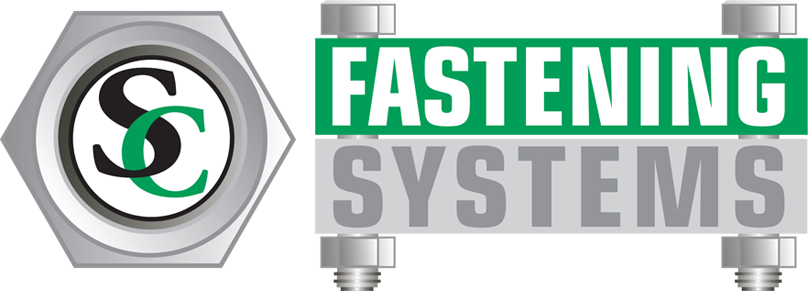What Are Hydraulic Fittings Used With? A Complete Guide
Hydraulic fittings are the critical connectors that make modern hydraulic systems function safely and efficiently. Whether you’re working in construction, manufacturing, or agriculture, understanding what hydraulic fittings connect to is essential for maintaining reliable equipment performance.
Understanding Hydraulic Fittings
Hydraulic fittings are specialized connectors designed to join various components in high-pressure fluid power systems. These precision-engineered components must withstand extreme pressures while preventing leaks and maintaining system integrity. Without proper fittings, even the most sophisticated hydraulic equipment would be unable to function.
Primary Components Connected by Hydraulic Fittings
Hydraulic Hoses and Tubing
The most common application for hydraulic fittings is connecting hydraulic hoses and rigid tubing. These flexible and rigid lines carry pressurized hydraulic fluid throughout the system, and fittings ensure secure, leak-free connections between sections. Hose fittings come in various configurations including crimped, reusable, and push-on styles to accommodate different pressure ratings and applications.
Hydraulic Pumps
Hydraulic pumps generate the system pressure that powers all hydraulic equipment. Fittings connect the pump’s inlet and outlet ports to supply lines and pressure lines. These connections must handle the full system pressure and are critical for pump performance and longevity.
Hydraulic Cylinders and Actuators
Hydraulic cylinders convert fluid pressure into linear mechanical force, making them essential in lifting, pushing, and pulling applications. Fittings attach supply and return lines to cylinder ports, enabling precise control of extension and retraction. Actuators for rotary motion also rely on properly sized fittings for optimal performance.
Hydraulic Valves
Control valves, directional valves, pressure relief valves, and flow control valves all require multiple fitting connections. These fittings allow operators to regulate fluid flow, direction, and pressure throughout the system. Valve fittings must provide reliable sealing while allowing for easy maintenance and valve replacement.
Hydraulic Motors
Hydraulic motors transform pressurized fluid into rotational mechanical power. Fittings connect both the high-pressure supply line and the low-pressure return line to the motor, enabling continuous operation in applications from winches to conveyor systems.
Filters and Reservoirs
Maintaining clean hydraulic fluid is crucial for system longevity. Fittings connect filters to the fluid circuit, allowing contaminants to be removed before they cause component damage. Reservoir fittings enable fluid storage, venting, and return line connections, keeping the system properly supplied with hydraulic oil.
Hydraulic Manifolds
Manifolds serve as central distribution points in complex hydraulic systems. A single manifold may require dozens of fittings to connect pumps, valves, cylinders, and other components. These compact assemblies reduce the number of hoses needed and improve system organization.
Accumulators
Hydraulic accumulators store pressurized fluid for emergency power, shock absorption, or supplemental flow. Specialized fittings rated for high pressure connect accumulators to the main hydraulic circuit safely and securely.
Industries and Applications
Hydraulic fittings are indispensable across numerous industries:
Construction Equipment: Excavators, backhoes, bulldozers, and cranes all rely on extensive hydraulic systems with hundreds of fittings controlling boom movement, bucket operation, and stabilizer deployment.
Manufacturing: Industrial presses, injection molding machines, and automated assembly equipment use hydraulic fittings to connect power units with actuators and control systems.
Agriculture: Tractors, combines, and irrigation systems depend on hydraulic fittings for implement control, steering assistance, and lifting mechanisms.
Automotive: While often overlooked, brake systems, power steering, and convertible top mechanisms all use hydraulic fittings designed for automotive applications.
Aerospace: Aircraft landing gear, flight control surfaces, and cargo doors operate using aerospace-grade hydraulic fittings built to exacting specifications.
Marine: Ship steering systems, deck cranes, and stabilizers utilize corrosion-resistant hydraulic fittings designed for harsh saltwater environments.
Types of Hydraulic Fittings
Different applications require different fitting styles. Common types include:
JIC (Joint Industry Council) fittings feature 37-degree flare connections and are widely used in high-pressure applications.
NPT (National Pipe Thread) fittings use tapered threads and are common in lower-pressure systems and when compatibility with pipe threads is needed.
SAE O-ring fittings provide excellent sealing through O-ring face seals and are popular in mobile hydraulics.
ORFS (O-Ring Face Seal) fittings offer superior leak resistance and are ideal for high-vibration environments.
Compression fittings work well with rigid tubing and allow for easy installation without special tools.
Importance of Proper Fitting Selection
Choosing the correct hydraulic fitting is crucial for system safety and performance. Factors to consider include operating pressure, temperature range, fluid compatibility, vibration levels, and environmental conditions. Using undersized or incompatible fittings can result in catastrophic failures, equipment damage, and safety hazards.
Maintenance and Best Practices
Regular inspection of hydraulic fittings helps prevent unexpected downtime. Look for signs of leakage, corrosion, or damage. Always use proper torque specifications when installing fittings to ensure adequate sealing without overtightening. Keep replacement fittings on hand for critical systems to minimize downtime during repairs.
Conclusion
Hydraulic fittings may be small components, but they play an outsized role in the reliable operation of hydraulic systems across countless industries. From connecting hoses and pumps to linking cylinders and valves, these essential connectors enable the safe transmission of high-pressure hydraulic power. Understanding what hydraulic fittings are used with helps maintenance professionals, equipment operators, and engineers make informed decisions about system design, maintenance, and troubleshooting.
Whether you’re maintaining construction equipment, designing manufacturing systems, or servicing agricultural machinery, proper selection and maintenance of hydraulic fittings ensures optimal performance, safety, and longevity of your hydraulic systems.
